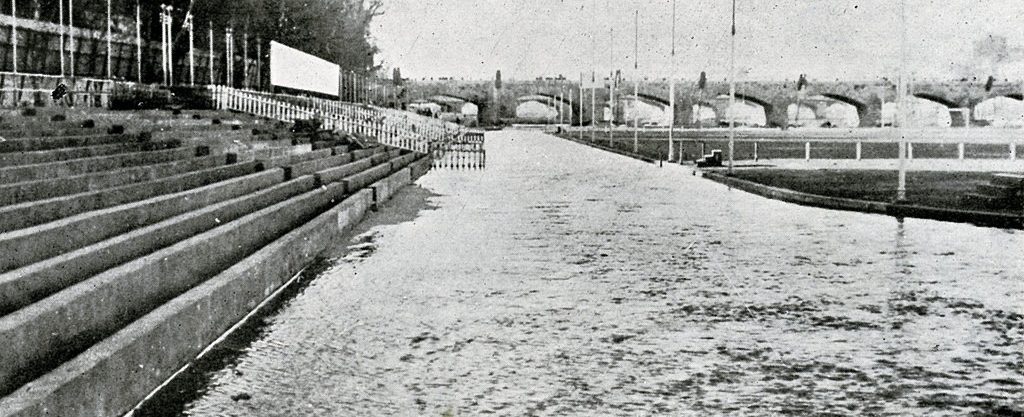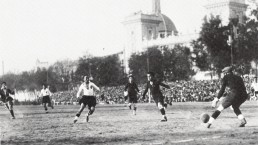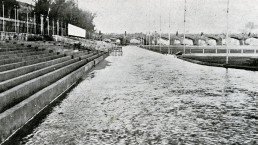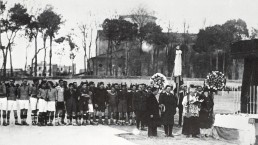A picture of the Campo Del Patronato de la Juventud Obrera.
Due to Gimnástico’s affiliation to the Patronato de la Juventud Obrera, the initial movements of the team presided over by Amador Sanchís in the early years of the second decade of the 20th century converged on the football pitch built in the Parque de la Pechina, property of this charitable institution, in the enclave where the Bus Station and the Nuevo Centro Shopping Centre now stand. Although Gimnástico’s itinerary in the 1920s will take them from the Camino de la Soledad Stadium to Vallejo, with a brief stay at the Stadium Valenciano, the lower categories of the Blue and reds will continue to make use of the different pitches built in the Pechina Park..
Gimnástico played their home games at the Campo De La Soledad.
The Campo de La Soledad was built at the same time as Algirós and its construction was the result of the complicity and terrible sacrifice of Juan Milasa. The fiefdom, baptised with the bucolic name of Camino de La Soledad, competed with Algirós in the primitive struggle for football supremacy in Valencia. Critics agree that they were the main facilities for football in the city in the context of the change between the second and third decade of the 20th century. The Campo de La Soledad was fenced, an aspect that conferred modernity..
An aerial image of the Stadium in the Turia riverbed.
It did not take long for the Gimnástico troops to face a new exodus to settle on the banks of the River Turia at the height of the Palacio San Pío V. This construction did not leave the political class of Valencia in the 1920s indifferent and the debate it generated was huge. The work responded to the personality of the architect Javier Goerlich. It was more than a simple facility for the development of football, as it was an attempt to offer a response to amalgamate the practice of other disciplines, perhaps in an attempt to make possible a capitalist exploitation of the facility by the Sociedad Anónima Stadium Valenciano. The opening of the Stadium brought Gimnástico and the Nürnberger Fusball Verein together on the pitch.
Vallejo was inaugurated in November 1925.
The usual floods and river problems put an end to the effervescence of the Stadium, leading to another transfer a few metres away to situate the epicentre of gymnastics on land leased from the Martínez de Vallejo family. The so-called Vallejo Stadium came into operation. However, the relationship between Gimnástico and the river led to the choice of the nickname that identifies the Blue and red supporters. The croaking of the frogs allowed for a lasting association of ideas. On 29 November 1925, the inauguration of Vallejo was celebrated with a match between Gimnástico and Saguntino (6-0). The Martínez de Vallejo family, ideologically connected to the Patronato de la Juventud Obrera, leased the field under very favourable economic conditions for the Gimnástico, which became the owner of a geographical space that allowed it to connect its social mass.
































